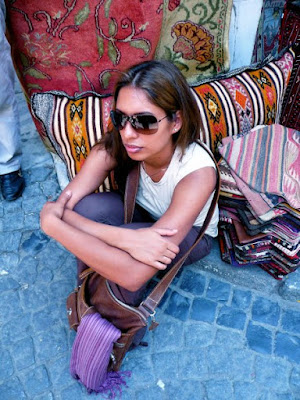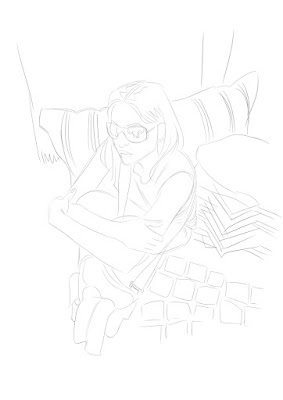I'm not saying that an artist should not use photographs in their work, in fact quite the opposite - I use quite a lot of photo reference, and studying photographs provides a wealth of detail and nuance that make the drawn image feel more authentic and natural. What I don't do is copy or trace the photographs exactly, as I feel that can rob the drawing of its character and spontaneity, and also appear quite lazy. For many of my pinup girl illustrations, generally what I do is to do a quick initial sketch based on the photograph, including general impressions of most of the details, and then I put the photograph away before I start work on the final piece. Once the photograph is out of sight I am free to stylize and distort the shapes and interpret it in my own way.
I usually don't trace photos, but occasionally a tricky pose or angle can prove to be quite frustrating and time-consuming and so a quick trace can help reduce the stress. I decided to do an example for this post. I chose this photo of a friend of mine (and yes, I got her permission to use the photo):

I chose it because it's a difficult angle and pose and would be much harder to draw from scratch than a simple eye-level portrait. Then I did a quick, loose digital sketch over it:

Once the basic shapes are there, I remove the photograph and start working on the final drawing without referring back to the original, using my memory/imagination/understanding of figure drawing to do the rendering.

The final drawing hopefully retains the authenticity of the photograph, while still having some spontaneity and character that a direct trace wouldn't.
(I don't intend this post to be any kind of legal advice for using photographs in hired illustration, mainly because I'm not qualified to dispense such advice and copyright laws probably aren't consistent worldwide anyway. This is just an example of how I use photos in my own work. Generally speaking if you are to use photographs it's safest (and most ethical) to use ones that you've taken yourself, or to ensure that you've got permission by the photographer.)
No comments:
Post a Comment